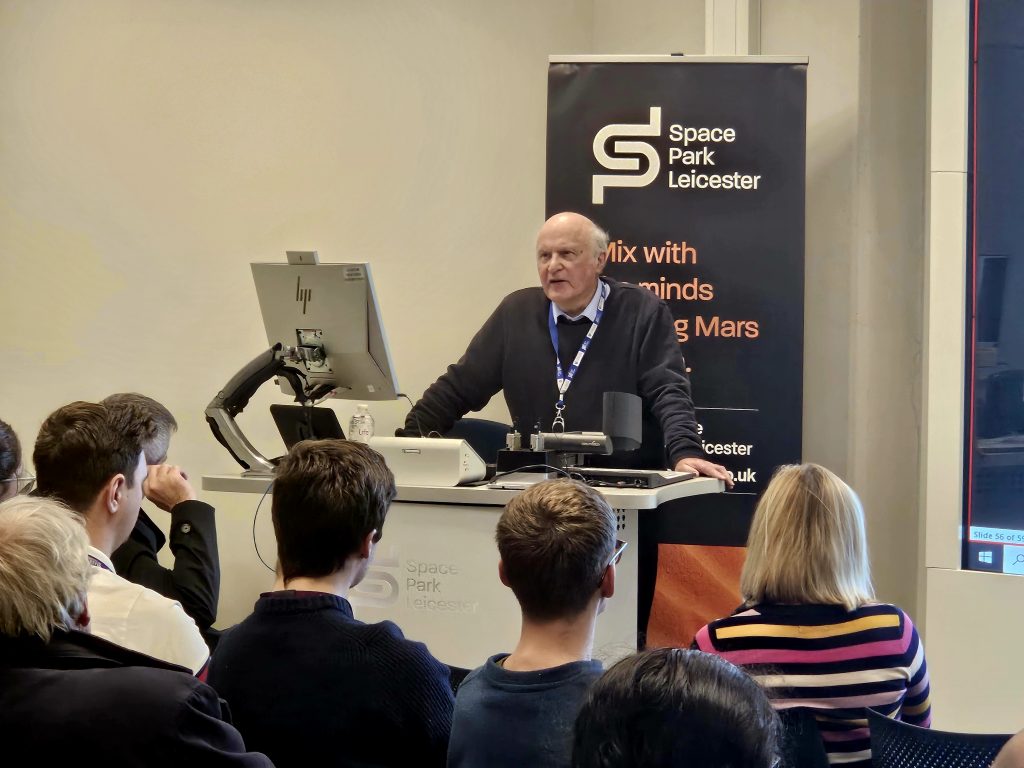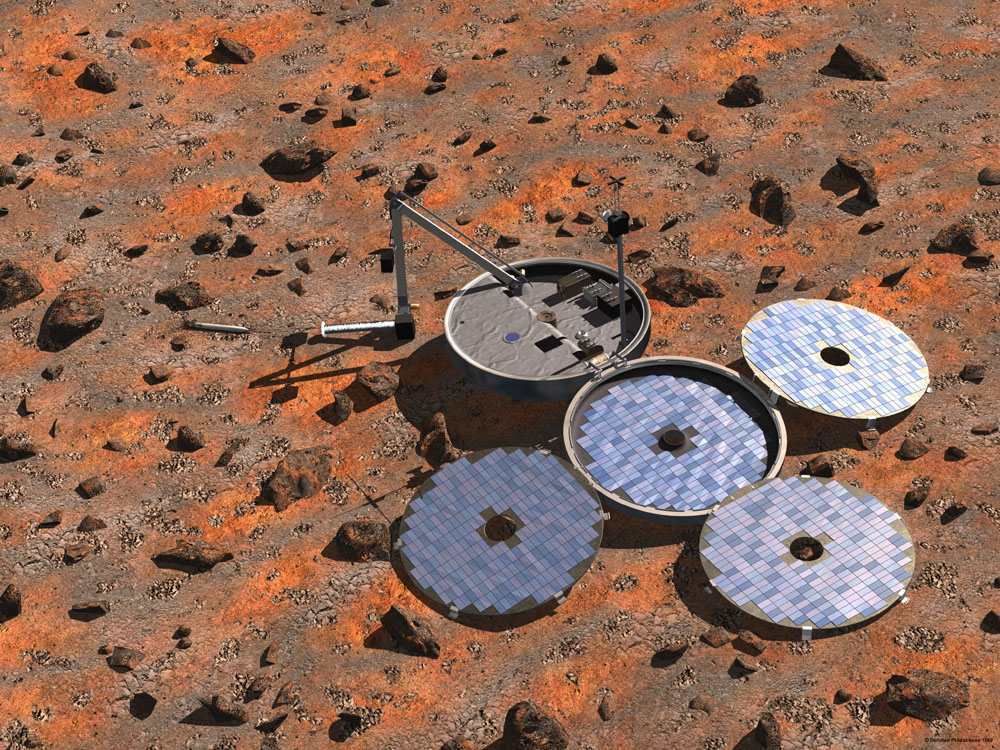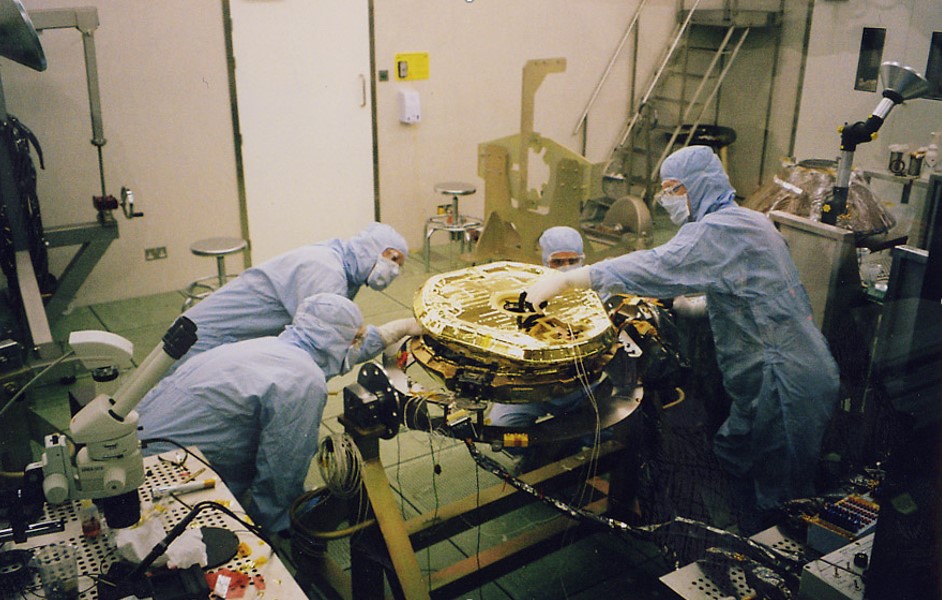Leicester’s role in historic Mars mission revealed 20 years on

A behind-the-scenes account of Leicester’s role in one of the most innovative missions to explore life on Mars has been released online just days before the mission landing’s 20th anniversary.
The UK-led Beagle 2 Mars Lander detached from its mother craft, the European Space Agency’s Mars Express mission, on December 19, 2003, and was expected to land on the Red Planet six days later.
Scientists around the world, including teams at the University of Leicester and the National Space Centre and the Science team at based at the Open University, who were involved in the mission, waited eagerly in the early hours of Christmas Day 2003 for a signal from Beagle 2 showing it had landed successfully.
Unfortunately, no signal came, prompting scientists to believe Beagle 2 had either burned up in the planet’s atmosphere or crashed into its surface.
It was presumed lost for more than a decade until January 2015 when it was publicly revealed that the lander had been discovered on Mars – making the UK the third country to land a spacecraft on Mars.
Now, 20 years on from the mission, a presentation has been released online of Beagle 2 Mission Manager, Professor Mark Sims, speaking about what he and his colleagues from the University of Leicester and the Beagle 2 team did during the historic space mission.
The Professor of Astrobiology and Space Instrumentation served as the Study Manager for the first two years of the project, was responsible for the instruments and flight operations and was even the person who hand delivered the Beagle 2 proposal to the European Space Agency back in February 1998.
Speaking at the University’s £100 million space hub Space Park Leicester, he recalled: “Twenty years ago, on Christmas Day 2003, a group of us were sat in the National Space Centre in the Beagle 2 Mars Lander Operations Control Centre crossing our fingers for Beagle 2 to land successfully on Mars.
“Unfortunately, we never got a signal and we assumed that Beagle 2 was probably lost. It ruined our Christmas.
“We spent the next four or five months trying to talk to Beagle 2 but by August 2004 we had sort of given up on it. There was no orbiting camera with sufficient resolution to look for it, on the surface of Mars, because it was so small.”
However, that was not the end of the story. In November 2014, Beagle 2 was detected in images of Mars by the HiRISE Camera on NASA’s Mars Reconnaissance Orbiter and the news was revealed to the world the following January.
Professor Sims said: “This discovery meant the UK landed on Mars on Christmas Day 2003. There’s a bit of Leicester hardware on Mars – along with the other UK and European hardware involved – sat there today, even if we can’t talk to it.
“Was Beagle 2 a success or a failure? It landed on Mars and in my view that’s a success. It successfully entered the atmosphere and was the first controlled UK landing on another planet.
“Beagle 2’s entry and descent system worked, it was an engineering success. We got 99 per cent of the way there which is a fabulous achievement at the first attempt.


“It probably didn’t deploy fully, which you can count as a failure, but it was a really innovative project and academia and industry worked together on it as an integrated team.
“It inspired an awful lot of people. It inspired children, the general public, scientists and engineers and it trained a whole generation of people in planetary science and engineering.
“It indirectly led to the UK’s involvement in ESA’s Aurora Programme and the ExoMars Orbiter and Rover and the lessons and experience from Beagle 2 is being used in ExoMars and other Mars missions.
“On the failure side it didn’t communicate after landing and it didn’t provide science from the surface of Mars but Beagle 2 was something which Leicester and the UK should be proud to have been involved in.” The 67-minute presentation is available to listen to at https://youtu.be/e8nza9PIdd0 and also includes tributes to the late Professor Colin Pillinger of the Open University who conceived of the mission and ran and shepherded the project.


